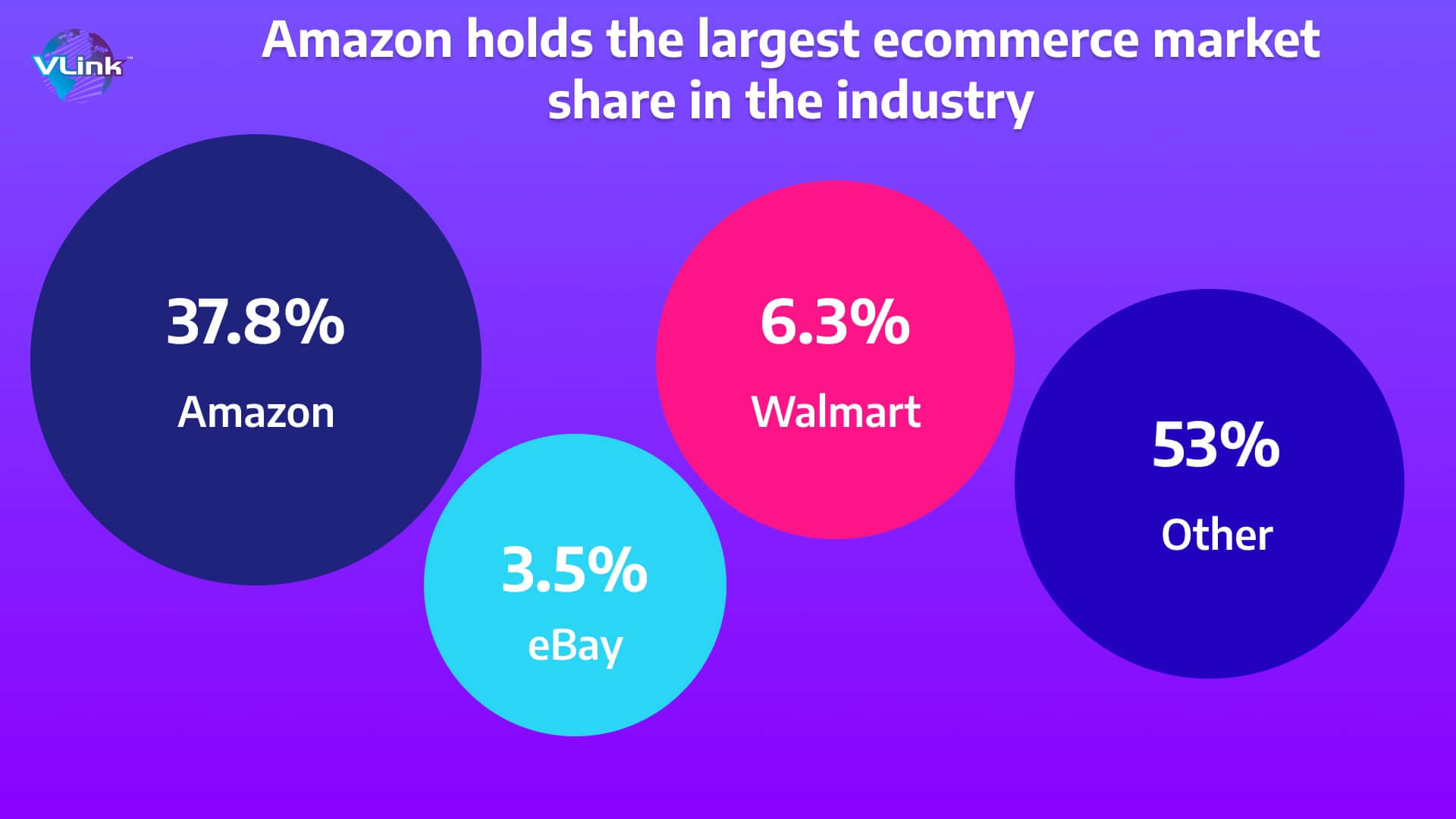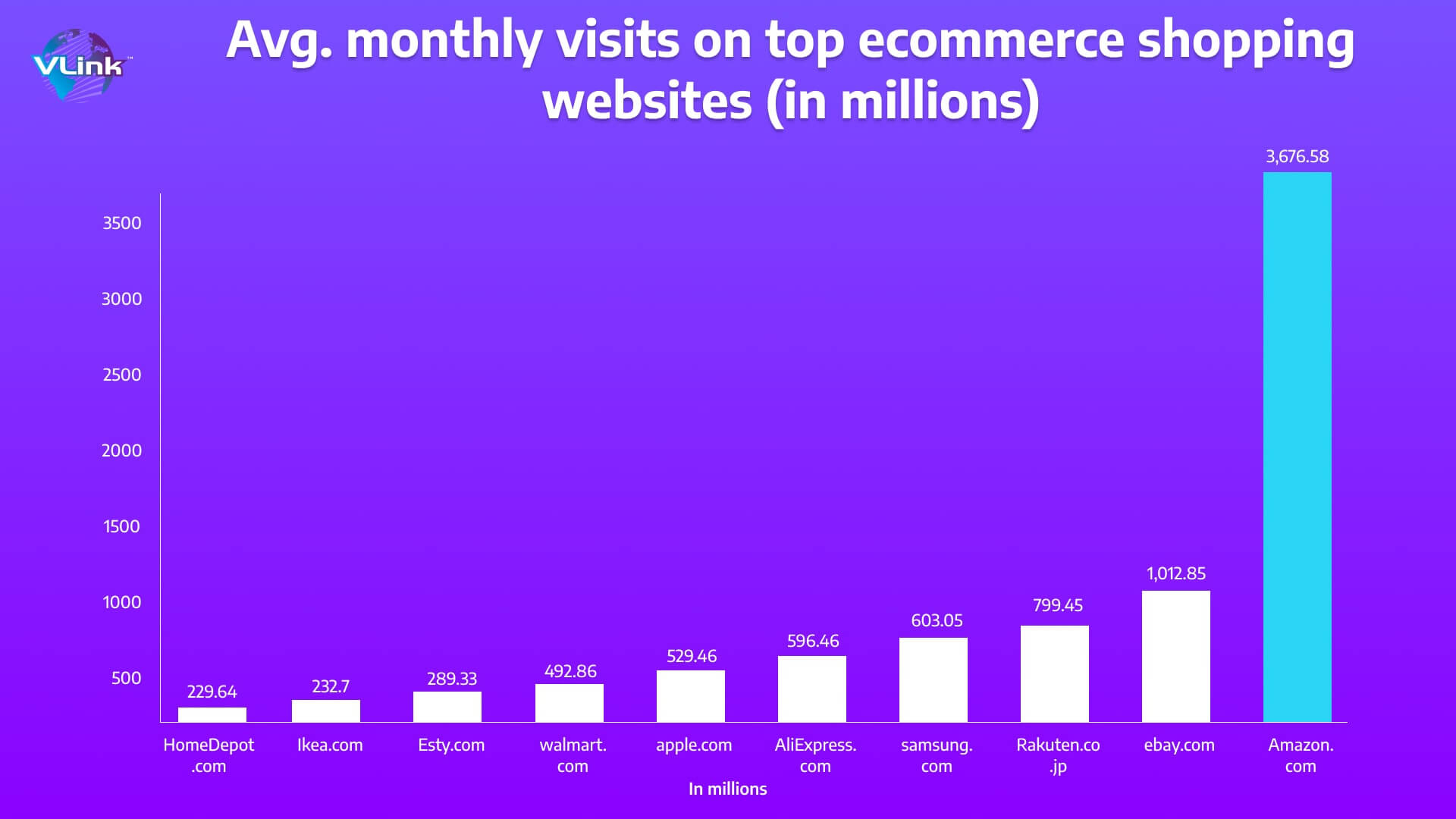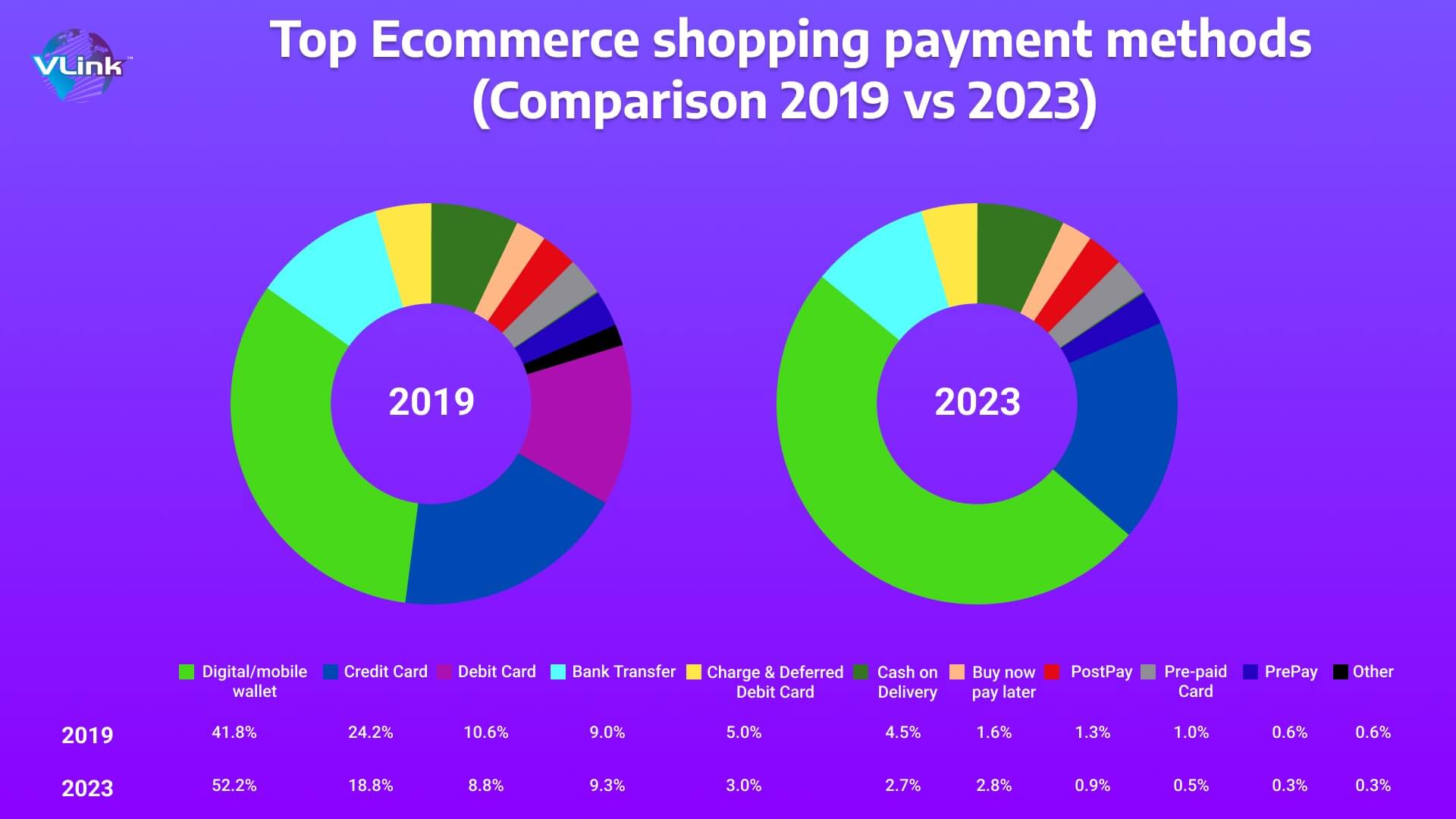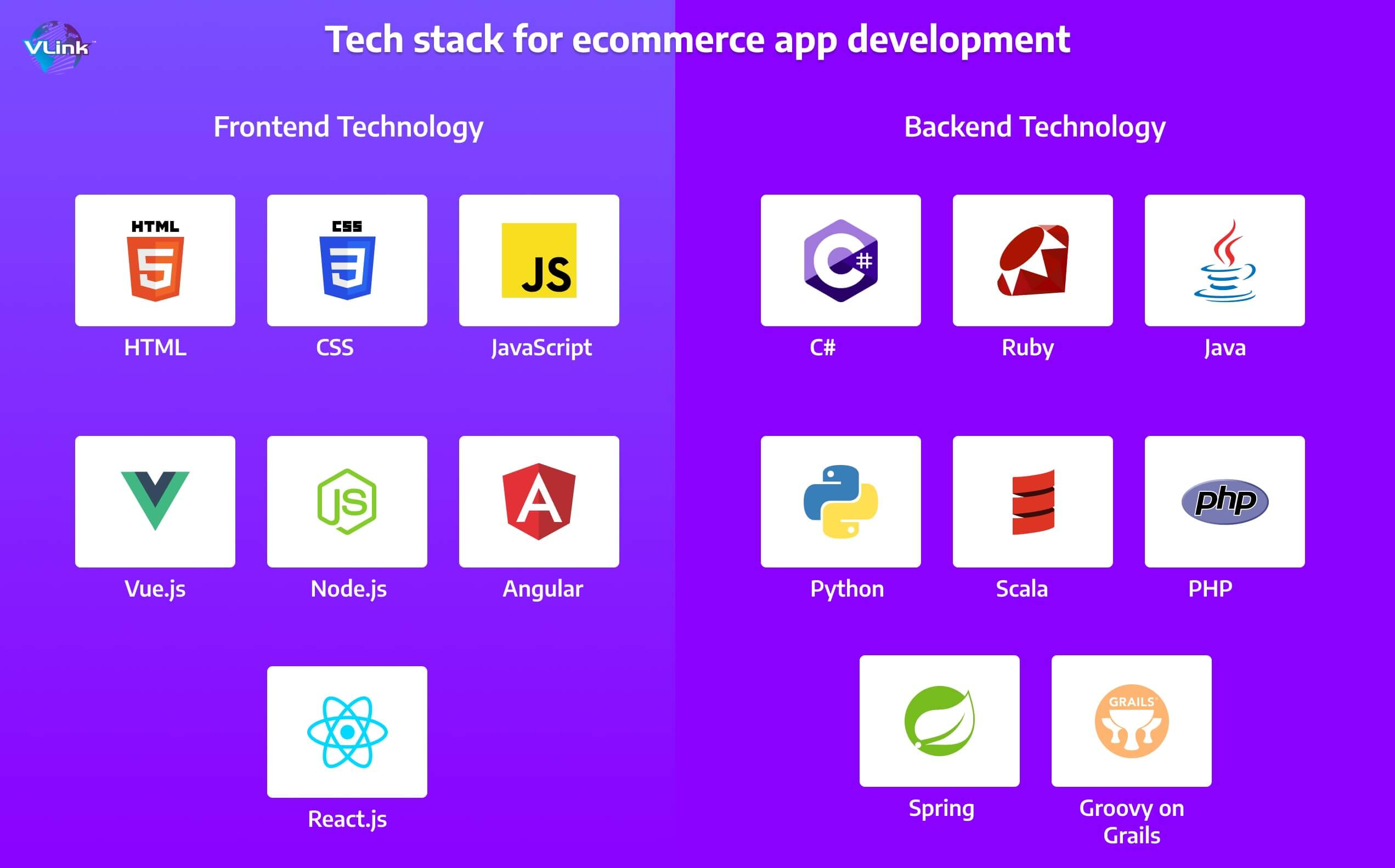The trend of online shopping has been surging in recent years at an astonishing pace. According to Statista, the retail e-commerce industry amassed approximately 4.28 trillion USD in sales in the year 2020.
To put this growth into perspective, these retail e-commerce sales stood at a mere 1.3 trillion USD back in 2014. Moreover, the upward trajectory of online shopping shows no signs of slowing down. Statista's projections indicate that e-commerce sales are expected to reach a remarkable 6.3 trillion USD by 2024.
 When it comes to building the most prominent e-commerce platforms, Amazon reigns supreme. Indeed, a global survey conducted by Statista reveals that a substantial 52% of online shoppers opt for Amazon as their preferred online shopping destination.
When it comes to building the most prominent e-commerce platforms, Amazon reigns supreme. Indeed, a global survey conducted by Statista reveals that a substantial 52% of online shoppers opt for Amazon as their preferred online shopping destination.
So, armed with this compelling data on Amazon's success, are you inclined to embark on a business venture akin to Amazon's? If your answer is in the affirmative, we invite you to peruse our comprehensive guide.
Current Scenario of Ecommerce Shopping Apps
Amazon is indeed a well-known international eCommerce platform that offers a wide range of products and services, including consumer electronics, online retail, digital content, computing services, and local services like grocery deliveries and daily deals. In recent years, Amazon's revenues have seen significant growth, especially during the Covid-19 pandemic.
In 2018, Amazon became the leading e-retailer in the United States, generating over $232 billion in sales. However, the pandemic had a profound impact on the company's revenues. In 2020, Amazon's annual revenues reached $386 billion, which marked a substantial 37% increase compared to 2019.
 The pandemic-driven surge in online shopping and demand for Amazon's services played a significant role in this growth. The trend of revenue growth continued into the first quarter of 2021, with Amazon reporting approximately $108 billion in revenues.
The pandemic-driven surge in online shopping and demand for Amazon's services played a significant role in this growth. The trend of revenue growth continued into the first quarter of 2021, with Amazon reporting approximately $108 billion in revenues.
This represented a remarkable 43.82% increase over the same period in the previous year, underscoring the ongoing demand for the company's offerings. One contributing factor to Amazon's success is its Prime membership program. Prime members, on average, spend around $1,400 per year on the e-commerce platform.
This figure is more than double the annual expenditure of non-Prime members, who spend approximately $600 per year. Prime membership provides various benefits, such as faster shipping, access to streaming content, and exclusive deals, which incentivize customers to engage more with Amazon's services.
Amazon's ability to adapt to changing market conditions, expand its service offerings, and retain and attract Prime members has solidified its position as a leading eCommerce platform, and its revenues continue to reflect this success.
Must-have Features in the Best Shopping App Development Like Amazon
To ensure a successful on-demand marketplace or ecommerce mobile app, it's essential to provide a seamless and user-friendly experience for your customers. Here are some key features and practices to consider for your app:
- Easy Registration Process
Simplify the registration and login processes to encourage higher app installation rates. Request only mandatory user information to avoid frustrating users and potentially losing them mid-registration.
- Social Media Integration
Incorporate social media integration to enable quick and effortless registration. This feature allows users to sign up using their social media accounts, reducing friction and accelerating the onboarding process. Additionally, it enables users to share products and discounts with their network, promoting your brand.
- Reviews and Ratings
Enable users to leave reviews and ratings for products on your platform. Customer feedback is crucial for building trust and helping potential customers make informed purchasing decisions. It enhances the credibility of your online marketplace.
- Customer Order History
Implement a "Your Orders" feature that allows customers to access their purchase history at anytime from anywhere. This not only enhances the user experience but also makes it easier for customers to track and reorder their favorite products.
- Push Notifications
Integrate push notifications to send personalized offers, discounts, and updates to customers based on their purchasing history and preferences. This feature can significantly boost customer engagement and sales by delivering relevant content.
- Secure Payment Methods
Offer a variety of secure payment options, such as credit/debit cards, net banking, Cash on Delivery, BHIM/UPI payments, and your own payment wallet. Providing multiple payment choice caters to diverse customer preferences and builds trust in your platform's security.

- Sort and Filter
Implement product sorting and filtering options based on features, price, brands, and other relevant criteria. This feature streamlines the user's search process, helping them find what they need quickly and saving time.
- Google Analytics
Integrate Google Analytics to gain insights into user behavior and preferences. This data can help businesses make informed decisions, improve the user experience, and adjust pricing strategies to stay competitive in the marketplace.
By incorporating these features and best practices into your app, you can create a user-friendly and efficient platform that not only attracts users but also retains them by offering a seamless shopping experience and opportunities for engagement and personalization.
Tech Stack Required to Build the Best Shopping App Like Amazon
Selecting the right technology stack for an eCommerce platform is crucial. It impacts both the performance and functionality of the website or mobile app. Several considerations come into play:
- Page Speed: eCommerce platforms must prioritize page loading speed to retain users and improve conversions. Fast-loading pages translate into higher revenues.
- Compatibility: Ensure that any new technologies or frameworks you choose are compatible with your existing systems. Integration should be seamless to avoid disruptions.

A robust eCommerce platform requires a well-balanced tech stack. Consider both front-end (user interface) and back-end (server-side) technologies. Popular choices include:
- Front-end: HTML, CSS, JavaScript, and popular libraries/frameworks like React, Angular, or Vue.js for building responsive and interactive user interfaces.
- Back-end: For server-side development, you can opt for languages like Python, Ruby, PHP, or JavaScript (Node.js). Databases like MySQL, PostgreSQL, or NoSQL databases can be used to store product information and user data.
The distribution part of your tech stack is as important as the product itself. Consider cloud-based solutions like AWS, Google Cloud, or Azure for scalability and reliability.
- Security: Security is paramount in eCommerce. Ensure that your chosen stack incorporates robust security measures to protect user data and transactions.
- Mobile Compatibility: Your eCommerce system should work seamlessly on both web and mobile platforms. Consider using responsive design and/or mobile app development frameworks like React Native or Flutter for a consistent user experience.
Conclusively, selecting the right technology stack for your eCommerce portal is a critical decision. It impacts the performance, scalability, and user experience. Ensure that your chosen technologies align with your business goals and can seamlessly integrate with your existing systems.
Steps To Build the Best Shopping App Like Amazon
If you're aiming to build the best shopping app, here are some essential steps to guide you through the process.
Before you dive into developing your shopping application, conduct thorough competitor analysis. Study the leading eCommerce platforms like Walmart, Amazon, Flipkart, eBay, and Shopify. Identify what makes them the first choice for buyers.
This analysis is not about copying their features but understanding the elements that attract customers. Use this knowledge as a reference to create your unique selling proposition (USP) and design.
An appealing user experience (UX) and user interface (UI) design is crucial. Engage with professional UI and UX design companies if you're not well-versed in design. Create an attractive application that encourages users to explore and shop in an engaging and user-friendly manner. Design an eye-catching logo for brand recognition and ensure that your app's design aligns with your brand identity.
Stay updated with the latest technologies and incorporate them into your application. Building a scalable application is essential for long-term success. Familiarize yourself with the technology stack, which includes frameworks, frontend and backend technologies, databases, programming languages, and server-side languages. The right technology choices will ensure your app performs efficiently and adapts to future needs.
Once your app is developed, thoroughly test it on real devices to identify and fix any bugs or issues. You can engage with QA and testing professionals to help you with this step. After addressing any concerns and ensuring your app works flawlessly, it's ready for launch. Consider launching your app on popular app stores like Google Play and the Apple App Store.
App store optimization (ASO) is crucial to make your eCommerce app discoverable to potential users. Consider the following factors for effective app optimization:
- Keyword Research: Optimize your app's title, description, and keywords to match what potential users are searching for.
- Backlinks: Promote your app through backlinks from your website, social media, and other online platforms.
- Title: Craft a catchy and relevant title that grabs users' attention.
Reviews, Ratings, and Download Count: Encourage users to leave positive reviews, high ratings, and increase the download count to boost your app's visibility.
Before publishing your app, thoroughly preview it to ensure it meets your expectations. Use device emulators to test its appearance and performance. This step is crucial to fix any last-minute issues. Once you're satisfied with the results, publish your eCommerce app on the app stores of your choice.
Creating your own shopping application requires careful planning, attention to design and technology, and effective optimization for search engines. With a well-executed strategy, your eCommerce app can attract users and provide a seamless shopping experience.
Cost Of Developing a Shopping App Like Amazon
Estimating the development expenses for a mobile application akin to Amazon is no straightforward task. The cost of crafting a mobile app for either Android or iOS hinges on its attributes and functionalities. Furthermore, the expenditure of marketplace applications fluctuates, contingent upon resources, geographical location, and the time constraints associated with project completion.
To discover the optimal pricing for app development, we encourage you to get in touch with us. Share your requirements for your online shopping application, and we will construct it efficiently within a reasonable budget and a swift development timeframe.
On average, the expense of constructing an app resembling Amazon can range from approximately $40,000 to $300,000. This pricing is influenced by various factors such as the feature inventory, intricacy, user interface and experience design, and the hourly rates of marketplace app developers, among others.
Nonetheless, e-Commerce applications like Amazon or Flipkart necessitate essential elements like geolocation services, data synchronization, delivery scheduling, OTP verifications, and instantaneous customer support functionalities. The integration of these attributes will inevitably augment the expenses associated with Android and iOS app development.
Hire Vlink’s Ecommerce App Development Experts
We hope you're well-prepared for marketplace app development and have a clear understanding of the associated costs. Now is the perfect time to embark on your marketplace app project and build a thriving community of potential consumers and service providers. To achieve this, consider partnering with a dedicated ecommerce application development firm.
As a leading player in the ecommerce app development industry, we bring a wealth of experience, having served numerous prestigious brands, including industry giants like Adidas and IKEA. Our team of seasoned professionals is ready to assist you throughout the entire app development process and ensure a smooth start to your journey.
If you're interested in outsourcing your eCommerce project and wish to assemble a highly skilled development team for your ecommerce application, VLink is eager to be a part of your app development venture.
Frequently Asked Questions
The timeline depends on the complexity of your app. On average, it can take anywhere from 6 months to 1 year to develop a feature-rich app like Amazon.
Implement robust security measures, including encryption, secure authentication, regular security audits, and compliance with data protection regulations.
Promote your app through social media, email marketing, influencer partnerships, and targeted advertising. Offering special promotions and discounts can also attract users.
Engage with users through feedback mechanisms, offer loyalty programs, and continually improve your app based on user suggestions. Provide excellent customer support for a positive user experience.













